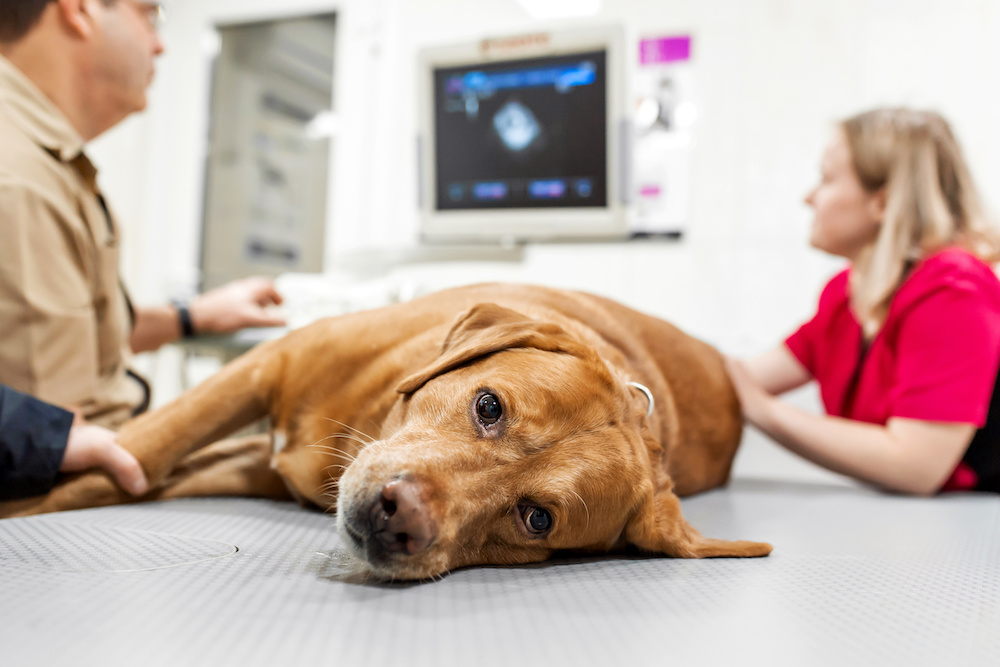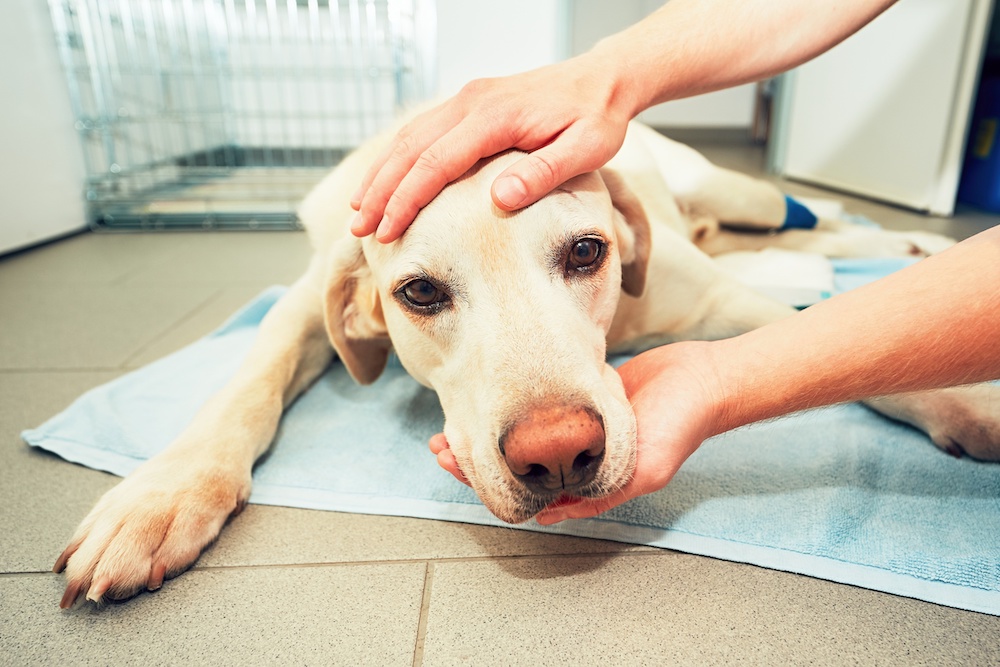Joint Problems in Dogs and How To Address Them
We may earn a commission for purchases using our links. As an Amazon Associate, we earn from qualifying purchases.
No pet owner likes to see their pet suffer, be in pain, or be unhappy in any way.
In fact, many go above and beyond to ensure that their pets live in a kind of comfort and luxury they wouldn’t have otherwise.
Unfortunately, joint problems in dogs are very common and can lead to a lot of pain for your precious pooch.
What can you do when your dog starts to suffer from joint problems?
Learning about the most common dog joint issues your pet might experience will help you either prevent them or give them relief with joint supplements made for dogs.
Joint Problems in Dogs
Owners often see their dogs go through dog joint pain, and that is because these problems are fairly common in dogs.
Just as human joints degrade over time, dogs go through similar issues.
Often, this degradation causes stiffness, arthritis, and other problems.
But what causes them in the first place?
What Causes Dog Joint Problems?
There are two primary categories of joint problems for dogs: developmental and degenerative causes.
Developmental problems are things like hip dysplasia, which are often caused by the joint developing incorrectly.
Degenerative problems include things like arthritis.
These are caused by ligaments or cartilage degrading over time and causing pain and discomfort.
While some treatments for these two categories overlap, the issues in each category also have specific treatments to help relieve pain.
Joint Pain in Dogs Symptoms
Learning how to spot joint pain in dogs symptoms is important for dog owners.
If you cannot recognize that your dog might be struggling with joint problems, you cannot make changes to improve their health.
Regardless of the specific joint problem they are facing, these are the most commonly seen symptoms in dogs:
- Limping
- Favoring a leg
- Struggling to jump
- Not wanting to jump where they used to
- Holding a limb in the air when standing
- Noticeable swelling
- Audible popping noises
- Getting up slowly
- Laying down slowly
- Having trouble standing or walking straight
- Restlessness
- Whimpering when resting or walking
If you notice your dog doing any of these things but see no apparent signs of injury, there is a chance your dog is suffering from a joint condition.
To determine the nature of this condition or what might be going on with them, you will want to schedule a vet appointment as soon as possible.
Your vet will do a physical exam in hopes of identifying the problem.
Then, he will likely take some x-rays to confirm whether the joint pain is degenerative or developmental.
What Are the Most Common Joint Issues in Dogs?
Did you know that you can base the likelihood of a dog joint issues by breed and weight?
Your joints act as the structure for your body, and that structure is affected by many things.
The most common joint problems seen in dogs are hip dysplasia and osteoarthritis.
Let’s take a closer look.
Hip Dysplasia
Hip dysplasia is a genetic condition.
This means dogs of certain breeds are going to be more likely to face it than other breeds.
Hip dysplasia is a condition where the femur bone does not properly fit into the hip socket, usually because of the depth of the hip socket.
A genetic trait, this issue will lead to pain and arthritis.
It is often treated with aggressive tactics, such as surgery, in severe cases.
Larger dog breeds, in particular, are more likely to develop this issue.
These breeds suffer from hip dysplasia most frequently:
- Saint bernards
- Labrador retrievers
- Bernese mountain dogs
- German shepherd dogs
- Great Danes
Of course, the breed is not the only factor that will play a part in whether or not a dog may develop hip dysplasia.
In addition to genetics, these factors affect the likelihood:
- Growth rate
- Types of exercise
- Weight
- Diet
- When they are spayed or neutered
To correctly manage a dog’s risk of hip dysplasia, all factors should be considered.
A Labrador retriever puppy, for example, should be fed a diet that will prevent them from growing too quickly and support bone and ligament development.
This will help them have a better chance of avoiding bone and joint problems.
By making sure they can develop at a slightly slower rate, you can give their body a better chance of being strong enough to support their weight.
What Are the First Signs of Hip Dysplasia in Dogs?
The first signs of hip dysplasia of dogs are likely one of the following:
- Limping
- Difficulty climbing or jumping
- Swaying while walking
- Low activity levels
- Decreased range of motion
These five symptoms usually show up early in hip dysplasia.
What’s more, they are also some of the easier ones to notice.
Owners might see their puppies as young as four months old showing these problems.
If you believe that your dog might be suffering from hip dysplasia, it is important to see your vet ASAP.
A vet can confirm this diagnosis through a physical examination and x-ray since it is a structural and genetic issue.
Once you know exactly what you are facing, you will be able to set up a treatment plan.
Osteoarthritis
Osteoarthritis, also known as degenerative joint disease, is a type of arthritis commonly seen in dogs.
All breeds can face this issue, but it is most commonly seen in large breeds.
This secondary condition happens after the ligaments around the affected joints begin to degrade and cause bones to rub together.
Of course, these are not the only joint problems that dogs can face.
Many joint problems, however, have similar causes, so the treatment for the issues often has a fair bit of overlap.

Other Joint Conditions
Many of the factors that can lead to an increased risk of hip dysplasia showing symptoms can also cause other joint issues.
Things like weight and diet are incredibly important in joint care.
Dogs that do not get the right nutrition, for example, may not be able to properly create or repair their ligaments while resting.
This means that their ligaments will degrade too fast, and they will likely face problems like arthritis as they age.
Similarly, dogs that are overweight are going to put too much pressure on their bone and joints.
This can cause joints to become weak over time, which is likely to cause many symptoms of joint problems to start showing.
Weight and exercise management can be invaluable tools for preventing future joint issues.
If joint issues already exist and you're considering using supplements, just be aware of rare but possible side effects of using dog joint supplements.
It's normal to question, are joint supplements good for dogs? Nonetheless, there are some solid benefits to be had
Do Joint Problems Need Surgery?
Treatments for hip dysplasia can range from simple things, like changes in your dog’s lifestyle to more exercise.
It is possible that more severe cases of joint problems like hip dysplasia may be best treated with surgery.
Surgery can feel like an extreme option, but severe cases may require this type of aggressive treatment.
Even if a vet believes your dog is a good candidate for surgery to improve their lifestyle, they will usually try non-surgical solutions first.
The earlier you begin to seek treatment for joint pain symptoms, the less likely that surgery will be required.
Preventative care can do wonders to prevent a pet from needing surgery, but you must be very attentive to ongoing symptoms.
Otherwise, you may end up needing to fund a serious surgery for your beloved furry friend.
How Do I Know if My Dog Has Joint Problems?
Recognizing dog joint pain is not something that every owner is trained to do.
What should you be watching out for to be sure you don’t overlook these symptoms?
Some conditions, such as hip dysplasia, will show signs when dogs are as young as just four months old.
You might not even know what type of behavior to expect at that age, so this can be challenging to pick apart.
The exact symptoms that become apparent will depend on how severe the disease is, what type of inflammation is happening, how loose the joint is, and other factors.
So, what exactly should you pay attention to when the factors can vary so widely?
Owners should pay attention to any of the following:
- Decreased range of motion
- Lower activity levels
- Low energy levels
- Reluctance to climb stairs or jump
- Difficulty getting up and laying down
- Swaying while walking
- Limping
- Noticeable swelling
- Noticeable changes in muscle size
- Hind end getting less muscular while the shoulder muscles get larger
- Unresponsive tail or hind end
- Obvious signs of pain
- Stiffness
If you notice one or two of these things happening to your dog, start keeping track of when they occurred.
Then, set up an appointment with your vet for a thorough examination to discover the root of the problem.
What Can I Give My Dog for Joint Pain?
If your dog is suffering from joint pain, you can give them anti-inflammatory and pain relief medications.
Of course, you have to make sure they are approved by your vet first.
Dogs with joint problems are commonly prescribed NSAIDs, a type of anti-inflammatory medication.
Much joint pain is caused by inflammation, so this can be very helpful.
It is also possible to give your dog joint supplements that will help to prevent future pain.
Joint supplements do not offer immediate relief, but they work to give the body the tools needed to reduce the risk of additional joint problems.
How Do You Prevent Joint Problems in Dogs?
There are a number of ways to lower the risk of a dog developing joint issues.
Here are some ideas you can do to prevent joint problems and to decrease any pain caused by them:
- Weight reduction (less weight puts less pressure on joints)
- Limit exercise (high-impact exercise on hard surfaces should be replaced with low-impact activities, such as swimming)
- Physical therapy (can help improve the strength of joints and surrounding supports)
- Joint supplements (glucosamine and other compounds can improve joint regeneration ability and prevent future joint problems)
- Anti-inflammatories (reduce swelling around joints, decreasing pain)
Keep Your Pet Moving
Now that you know more about dog joint problems, you are better equipped to help your pet live a happy and active life.
Even if your dog is not currently suffering from any joint pain, dog joint problems are very common.
Knowing what could happen can help you implement the right kind of preventative care to prevent such instances.
Additionally, early recognition of joint pain and problems can help you address them early on and treat them better.
In the end, what can help your dog is generally making sure he lives a healthy lifestyle.
Like us humans, they also need a balanced diet, supplements, and regular exercise, not just to stay healthy but also happy.

